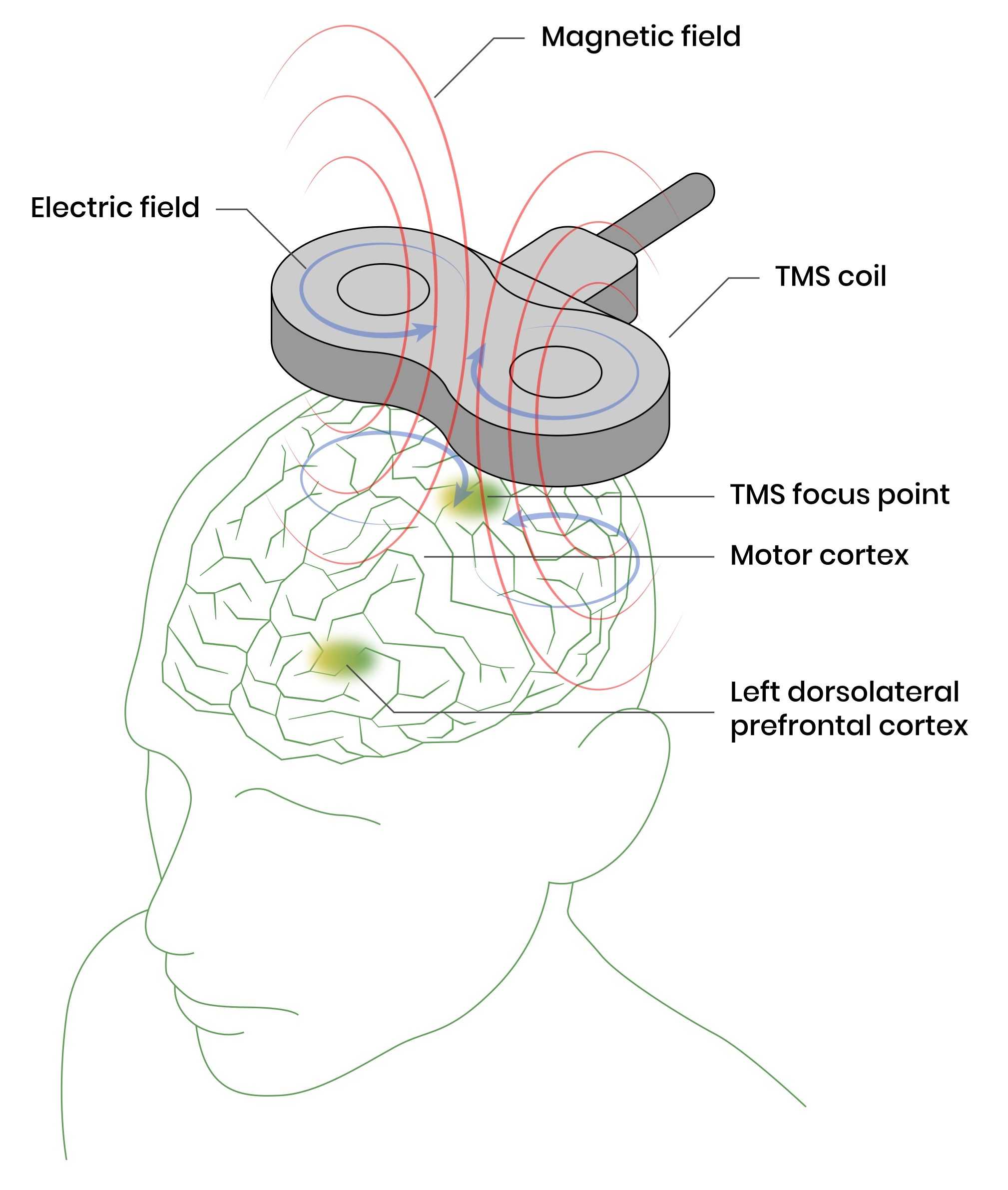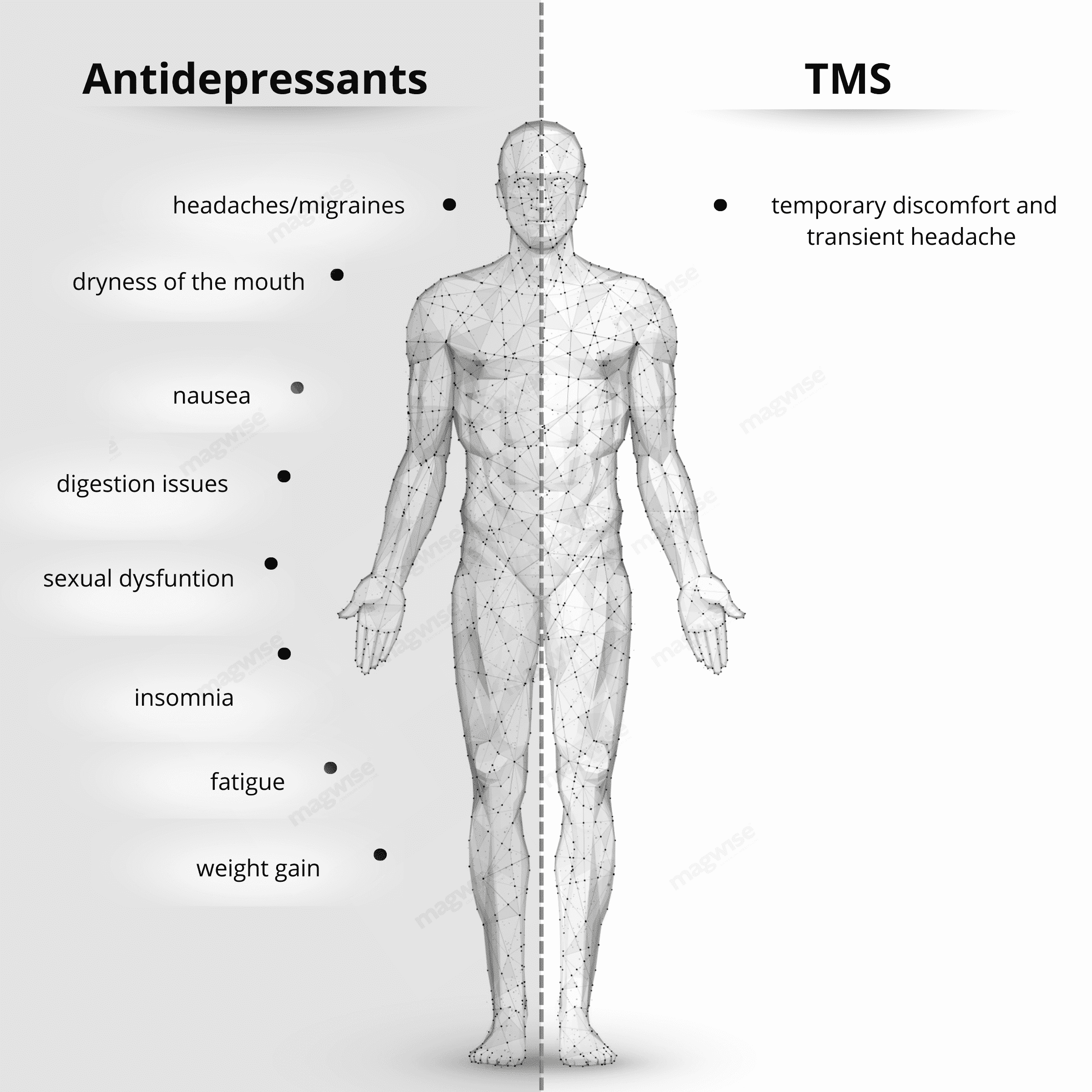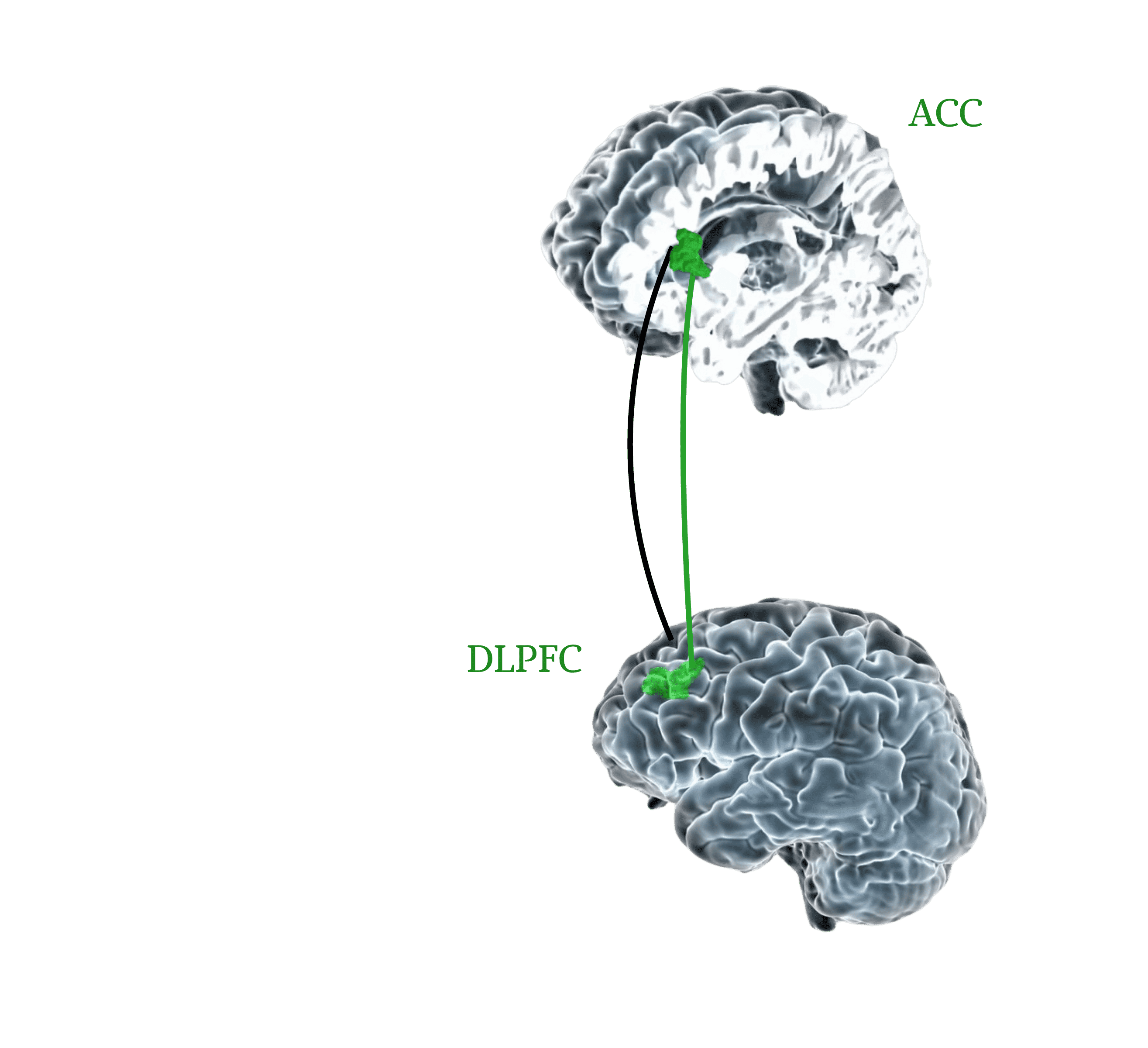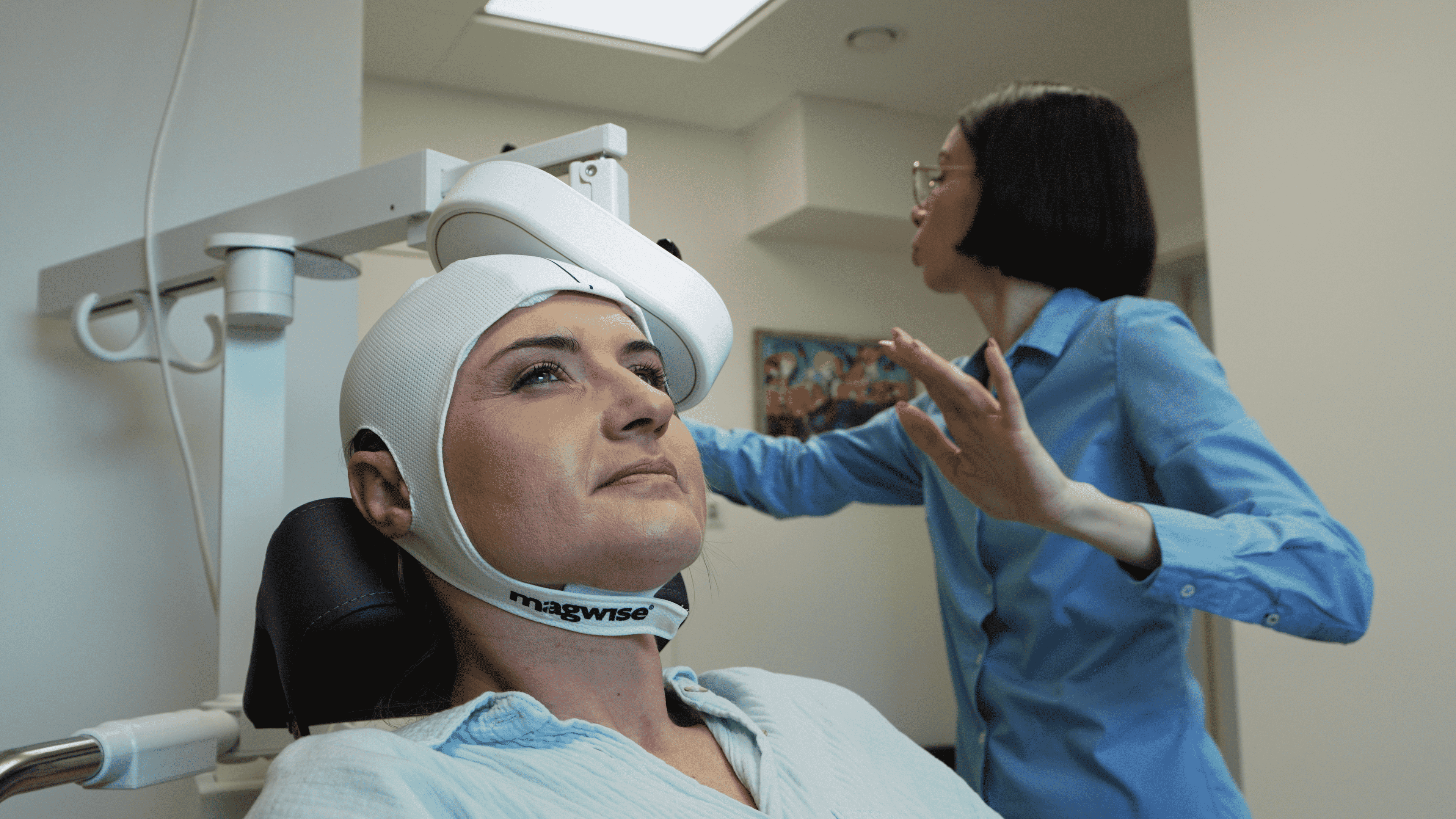- Safe, non-invasive, and well-tolerated
TMS does not require surgery or medication; it works externally by using magnetic stimulation to target specific areas of the brain. It is a non-invasive and well-tolerated method.
- Effectiveness supported by research
Particularly beneficial for patients with treatment-resistant depression. Significant improvement is observed in 50–70% of patients.
- An alternative to medication
TMS can be used as a stand-alone treatment or as an adjunct to medication, helping to reduce the need for drugs and their side effects.
- Long-term effectiveness
Studies show that in the depressed patients who respond to TMS therapy, improvement in mood and daily functioning can last for at least 12 months.
- Targeted and selective action
TMS can be used to target specific brain regions, such as the prefrontal cortex, without affecting the entire body.
- Improved cognitive functioning
Some patients report better concentration, improved mood, and better sleep quality.
- Quick return to daily life
A session lasts around 20–40 minutes and does not require a recovery period — patients can immediately return to work or other responsibilities.
- Compatibility with other therapies
TMS complements and enhances other therapeutic approaches, such as psychotherapy, rehabilitation, or pharmacological treatment.
TMS Therapy vs Electroconvulsive Therapy (ECT) and Vagus Nerve Stimulation (VNS)
TMS stimulation differs significantly from electroconvulsive therapy (ECT) and vagus nerve stimulation (VNS).
TMS Therapy vs Electroconvulsive Therapy (ECT)
Unlike electroconvulsive therapy (ECT), transcranial magnetic stimulation (TMS) does not require hospitalisation or general anaesthesia, nor is there any recovery period necessary following the procedure. After TMS session the patient can follow directly with daily activities. TMS is a non-invasive, safe, and well-tolerated treatment. It does not cause cardiovascular or respiratory complications, nor cognitive side effects — which may occur with ECT.
The two methods also differ in their mechanisms of action: TMS uses magnetic pulses to gradually and precisely modulate activity in targeted areas of the brain, while ECT induces seizures using electrical currents.

TMS Therapy vs Vagus Nerve Stimulation (VNS)
Both TMS (transcranial magnetic stimulation) and VNS (vagus nerve stimulation) are neuromodulation techniques used in the treatment of depression, but they differ significantly.
VNS, which has been approved by the FDA for treating depression, requires a surgical procedure involving the implantation of a device and works indirectly—via stimulation of the vagus nerve.
In contrast, TMS, approved by the FDA for treating depression, is a non-invasive, outpatient procedure. As a result, TMS is associated with a lower risk of systemic side effects.












